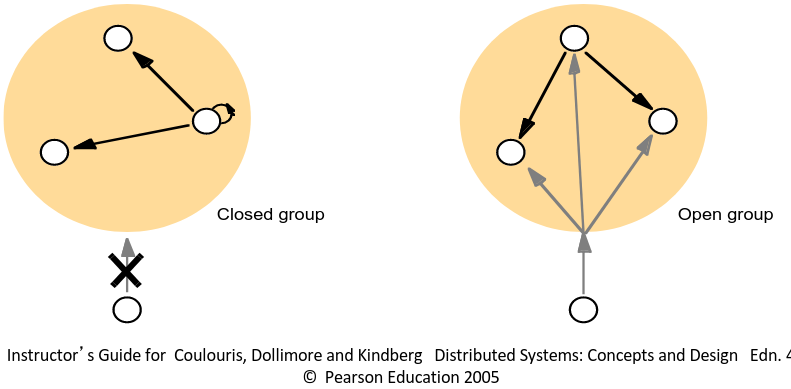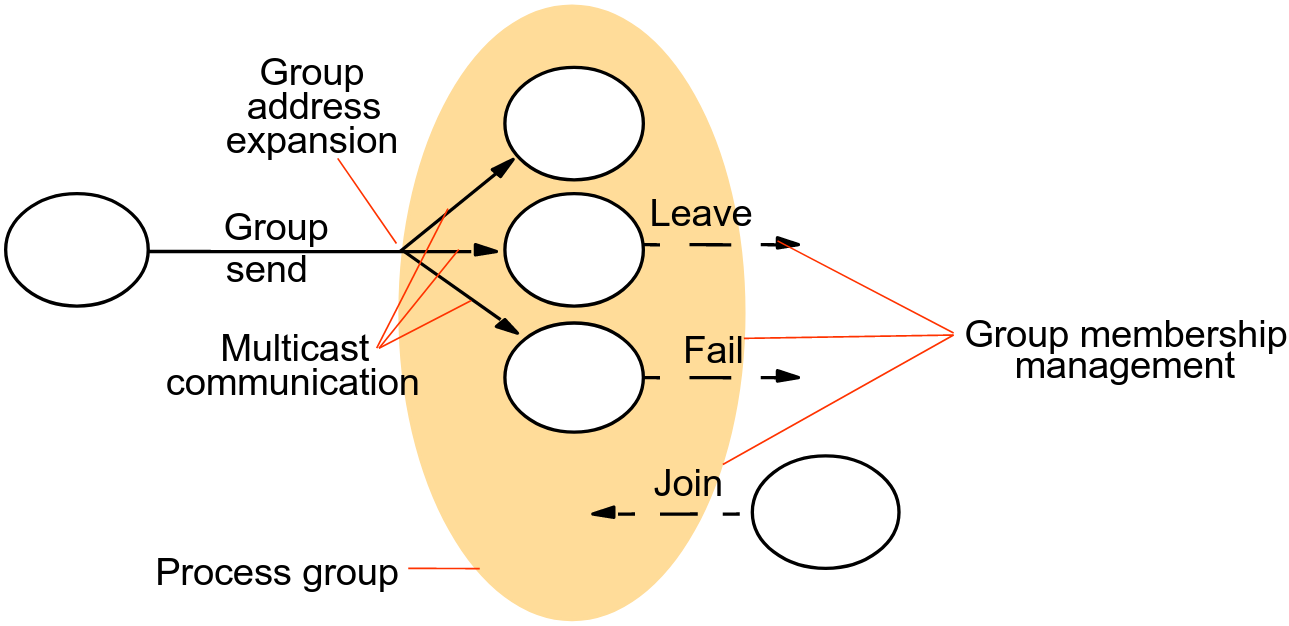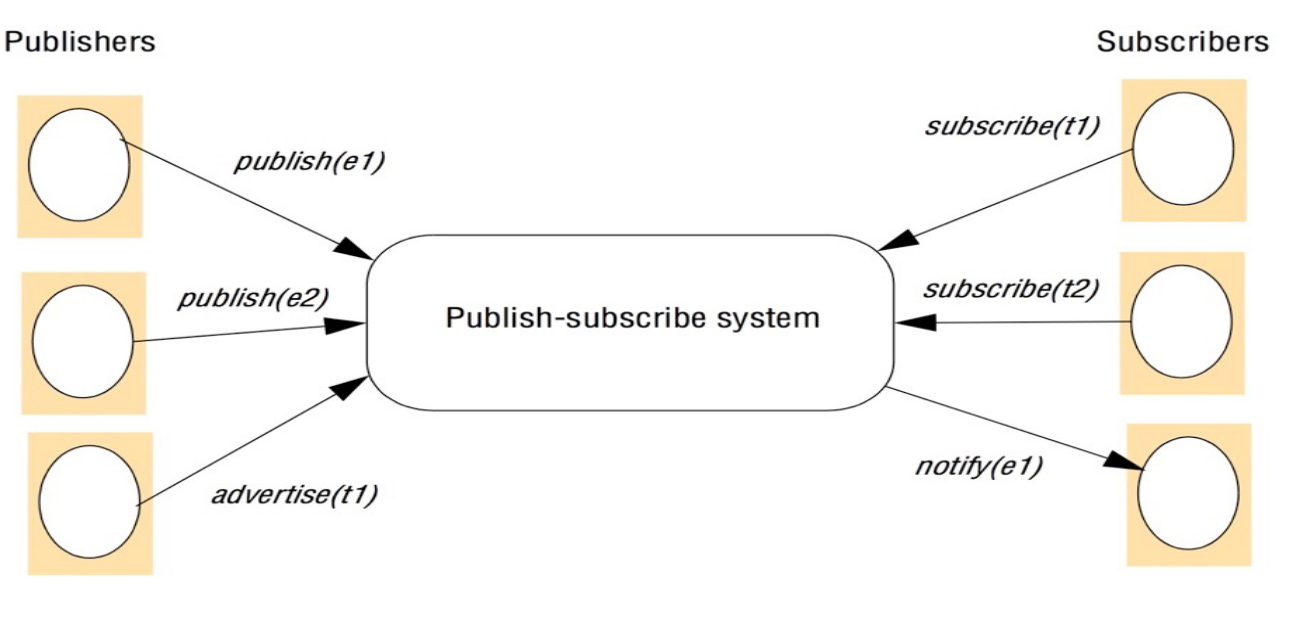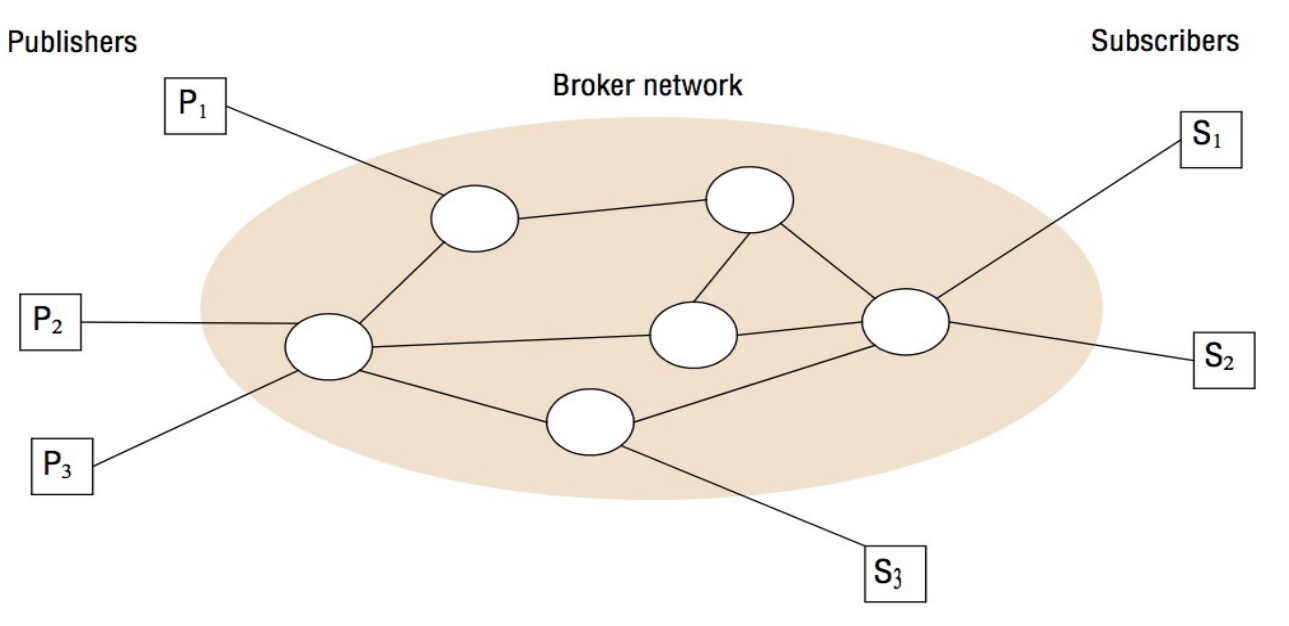10. Indirect Communication (1)
10/03/23
Indirect Communication
Communication between entities in a distributed system through an intermediary with no direct coupling between the send and the receiver(s)
Space Uncoupling - The sender does not (need to) know the identity of the receiver(s) and vice versa. E.g. partitions can be replaced, updated, replicated, migrated Time Uncoupling - The sender(s) and receiver(s) can have independent lifetimes. E.g. in a volatile environment
Asynchronous message passing = "synchronisation uncoupling"
Indirect communication paradigms
- A range of paradigms where; a message is not addressed to one specific entity, but, is sent to many entities and/or is sent via some intermediary
Group Communication
- An application-level abstraction of multicast communication (may be implemented over IP Multicast but doesn't have to be)
- Typical applications:
- Reliable distribution to large numbers of clients(finance)
- Collaborative applications
- Fault-tolerance
- System monitoring and management
Group programming model - There are groups that processes can join or leave. A message sent to a group is delivered to all members of that group
Options
Closed and open groups (Non-members cannot send to closed groups)

- Overlapping and non-overlapping groups - Non-overlapping => each process can be a member of at most one group at any moment
- Synchronous and asynchronous communication - Synchronous group communication => does a sender blocks until all group members have received the message/replied
Implementation Issues
Reliability
For a group communication extends that for direct communication:
- Integrity - The message received is the same as the one sent, and no messages are delivered twice
- Validity - Any outgoing message is eventually delivered
- Plus Agreement - If the message is delivered to one process, then it is delivered to all processes in the group
Ordering
Ordering constrains are imposed on delivered messages; typically a trade-off -> stricter ordering constrains => longer delays and more messages
- FIFO - Messages from one sender are delivered in the same order in which they were sent
- Casual order - If one message happens before another then it is delivered first
- Total order - All messages are delivered in the same order in every process
Group Membership Management
- Group membership is fundamental. System must be able to map groups to members
- Normally requires an explicit management interface
- For reliable communication there must also be failure detection
- Member crashes - must be removed from the group
- Network partitions - group partitions on half of it fails
- The group may provide notification of group changes

Publish-Subscribe
(Distributed event-based systems)
- Publishers publish structured events
- Subscribers express interest in particular events
- An event service matches published events to subscriptions, notifying subscribers accordingly
- Optionally, publishers may also advertise that they produce certain types of event

Applications
- Financial information systems
- Live feeds of realtime data
- Cooperative work with events of shared interest
- Ubiquitous computing
- Monitoring applications
Pub-sub characteristics and options
- Heterogeneity - Publishers and subscribers can be created with different technologies and completed independently of each other
- Asynchronicity - Publishing an event is almost always asynchronous
- Delivery guarantees - Systems can vary in reliability and ordering of events
Subscription (filter) model
How subscriptions are expressed
- Channel-based - Each event is published to a specific channel | subscribers subscribe to channels
- Topic-based - Each event has a topic (or subject) | subscribers identify topic(s) of interest
- Content-based - Each event has structured content | subscribers specify patterns to be matched by each event
- Type-based - Events are type | subscribers specify types of interest
- Objects of interest - events are linked to a specific object | subscribers specify the objects of interest
- Semantic filtering - events are described using a formal ontology
- Complex event processing - subscriptions are based on more than on event
Centralised vs Distributed implementations
- A centralised event service - relatively easy to construct. The event service becomes a bottleneck
- A distributed event service - more complex, but more scalable

Event routing in a distributed event system
- Flooding - every event is sent to every event broker
- Filtering - Event brokers share subscription information and forward events to where valid subscriptions exist
- Advertisements from publishers may help to filter subscription information for forwarding
- Rendezvous - There is a way to identify particular event brokers to handle matching events and subscriptions